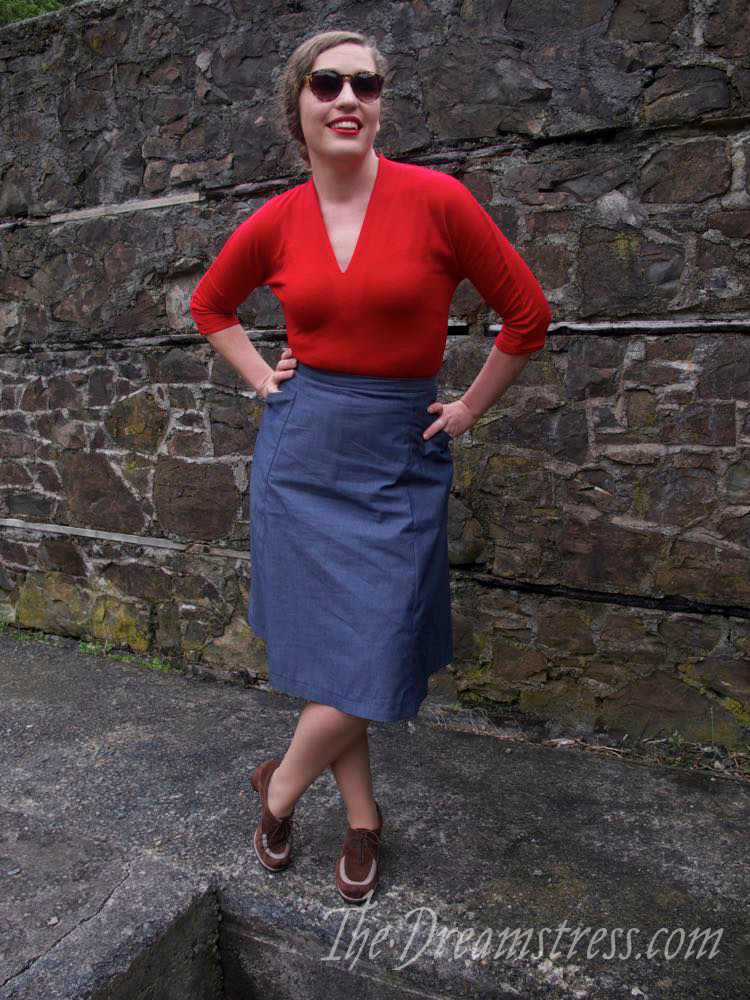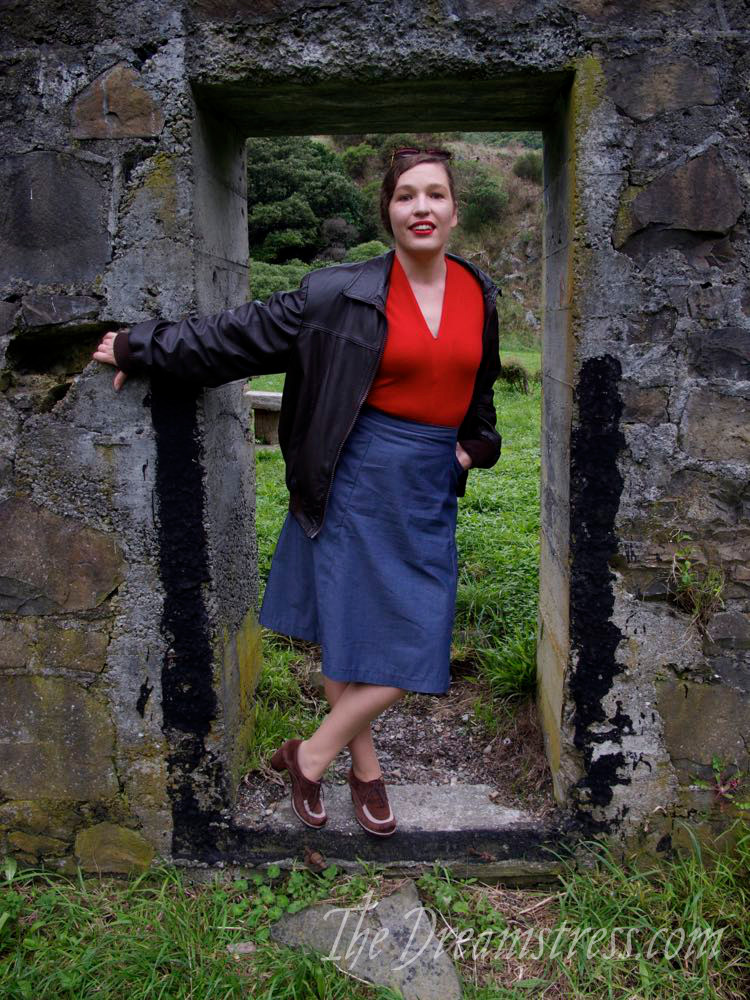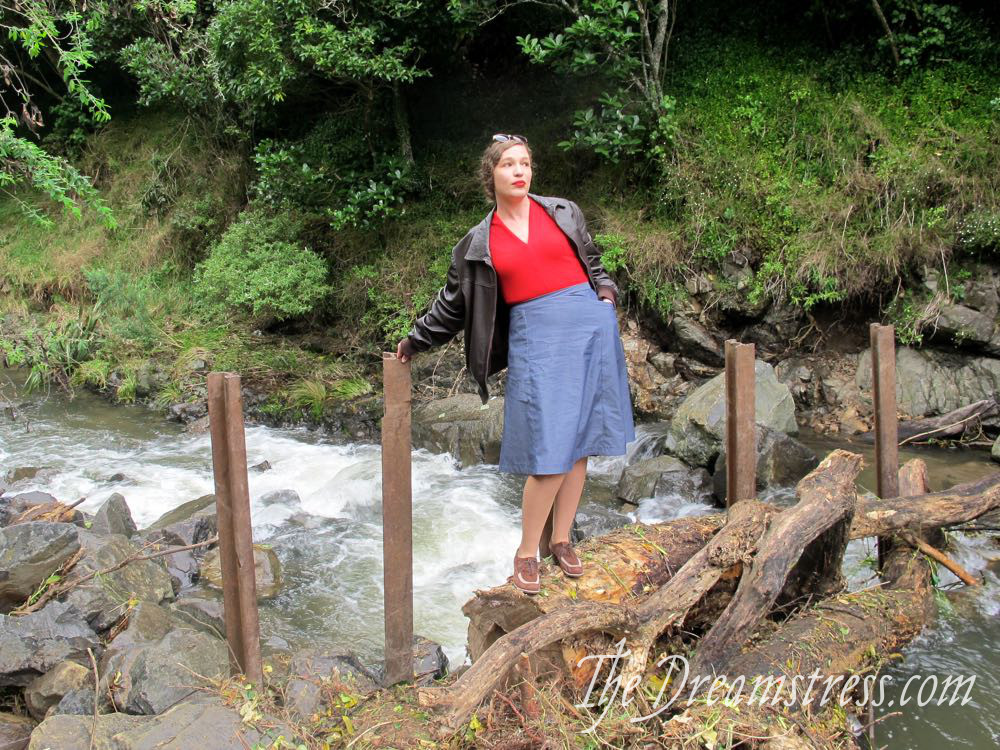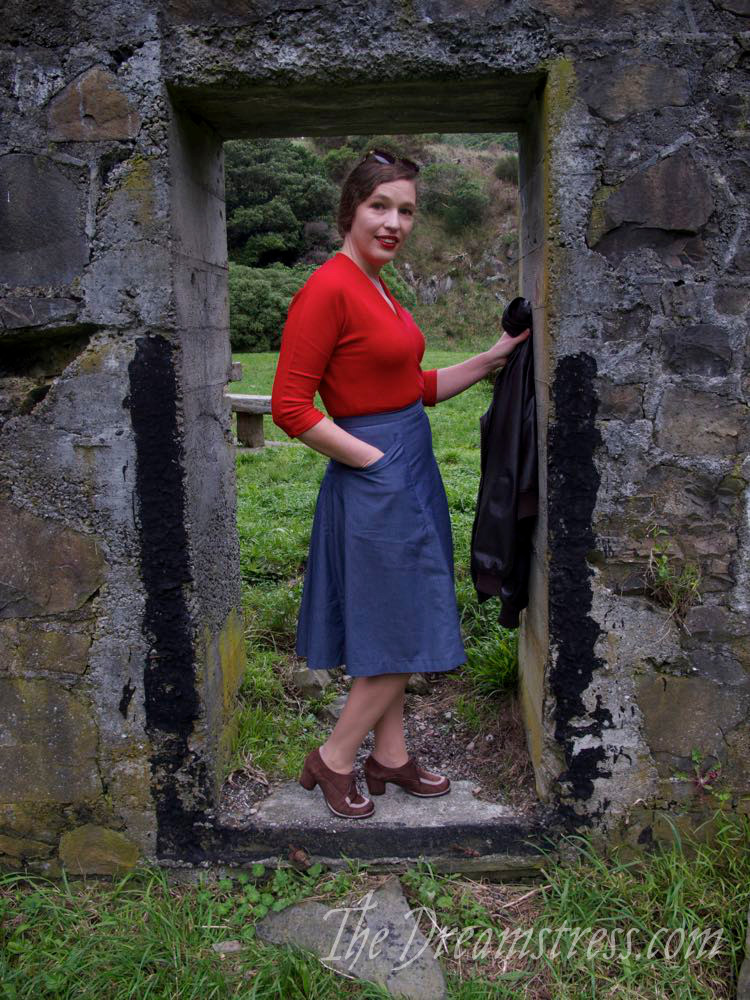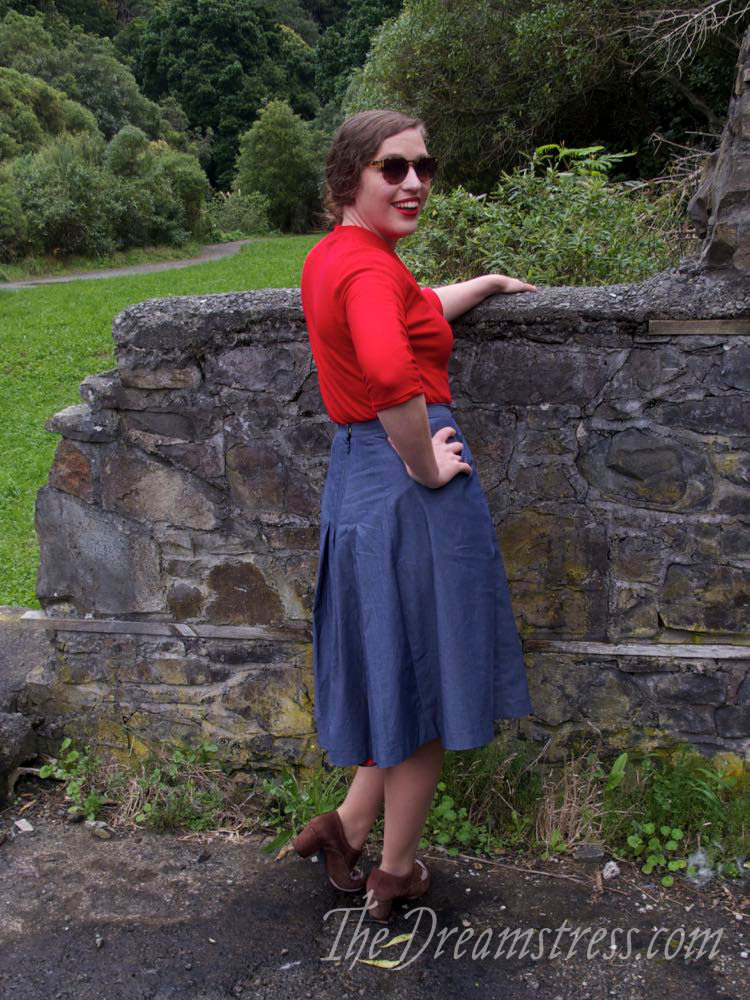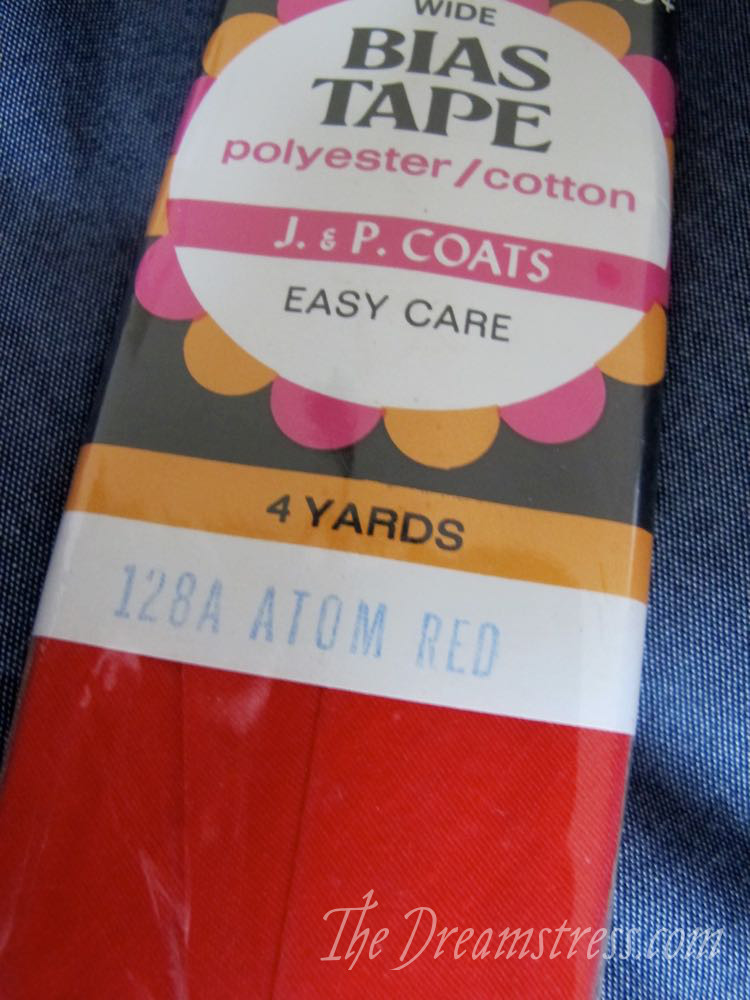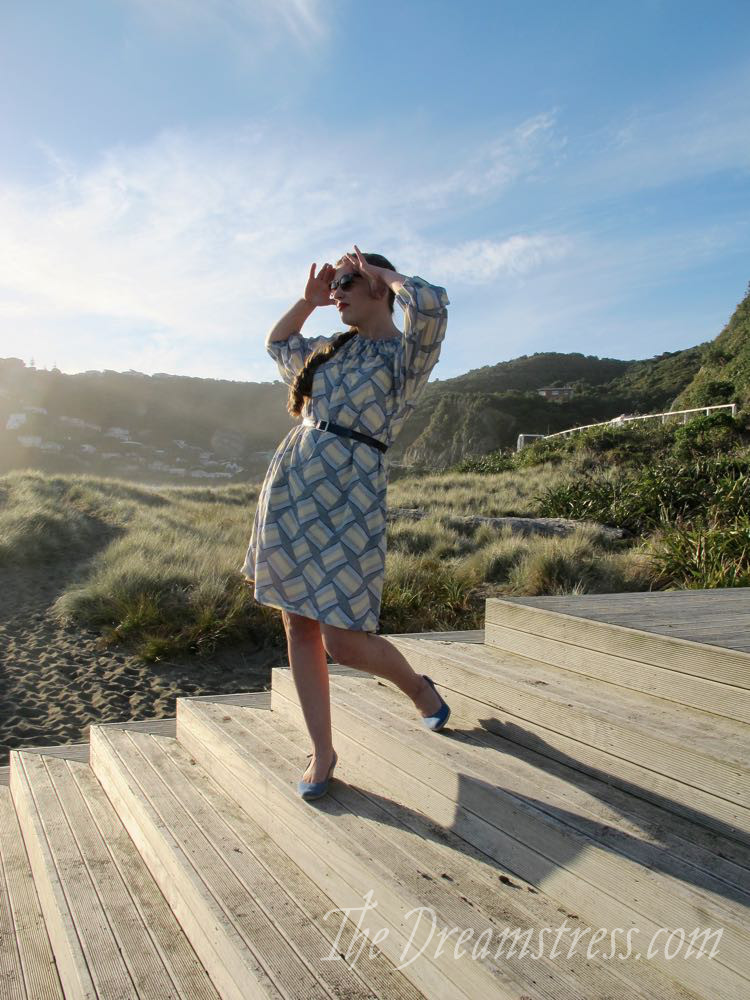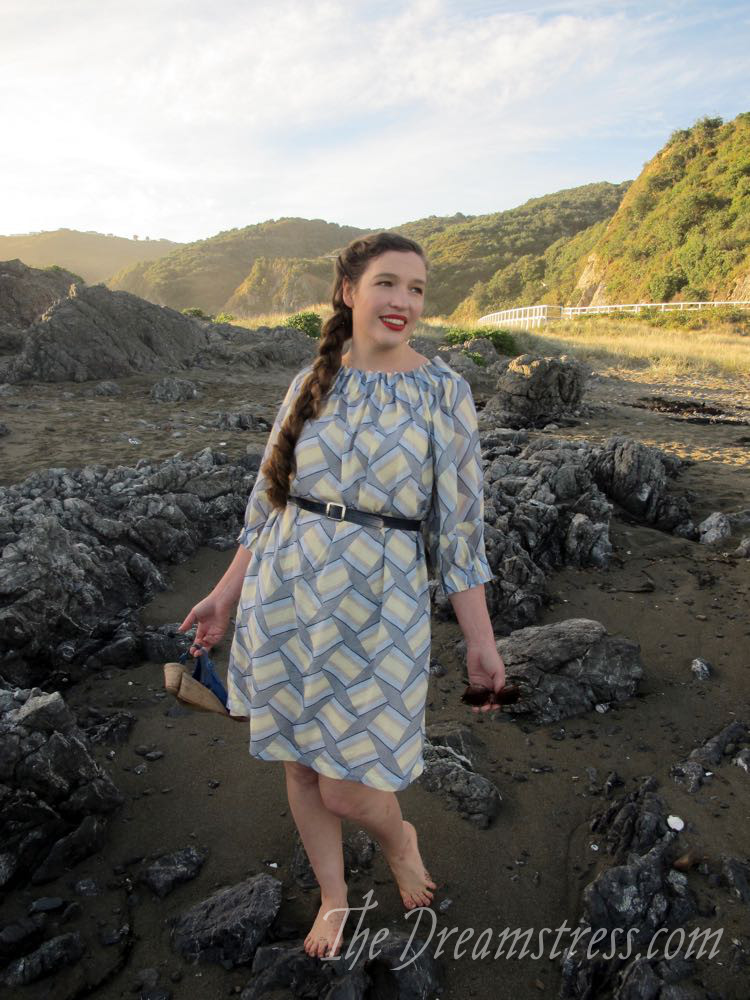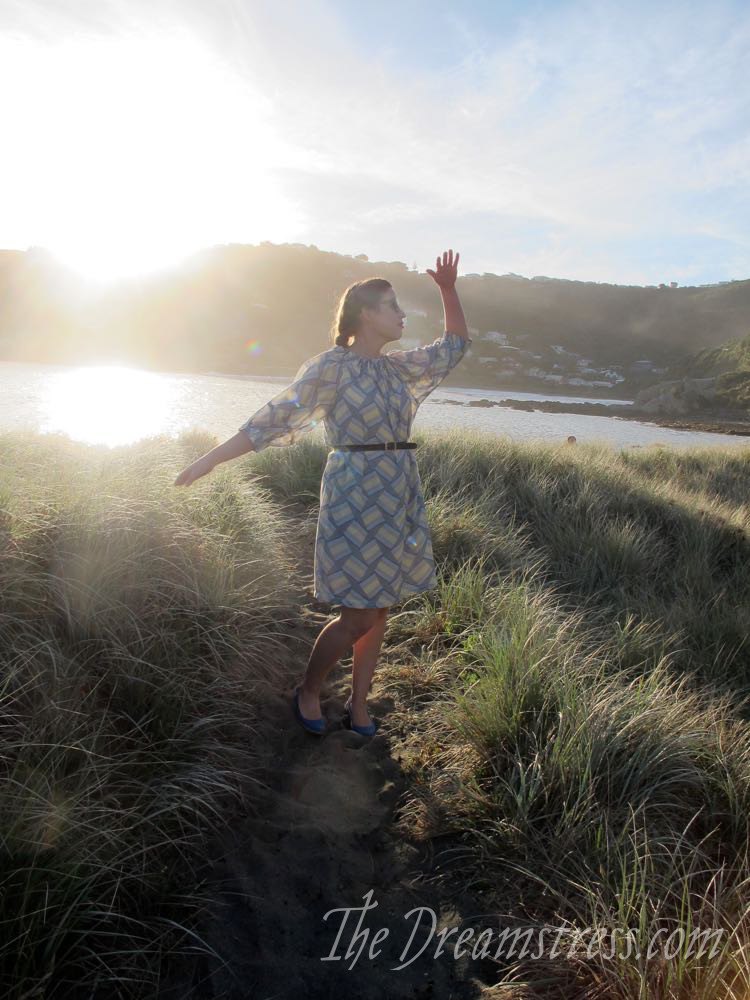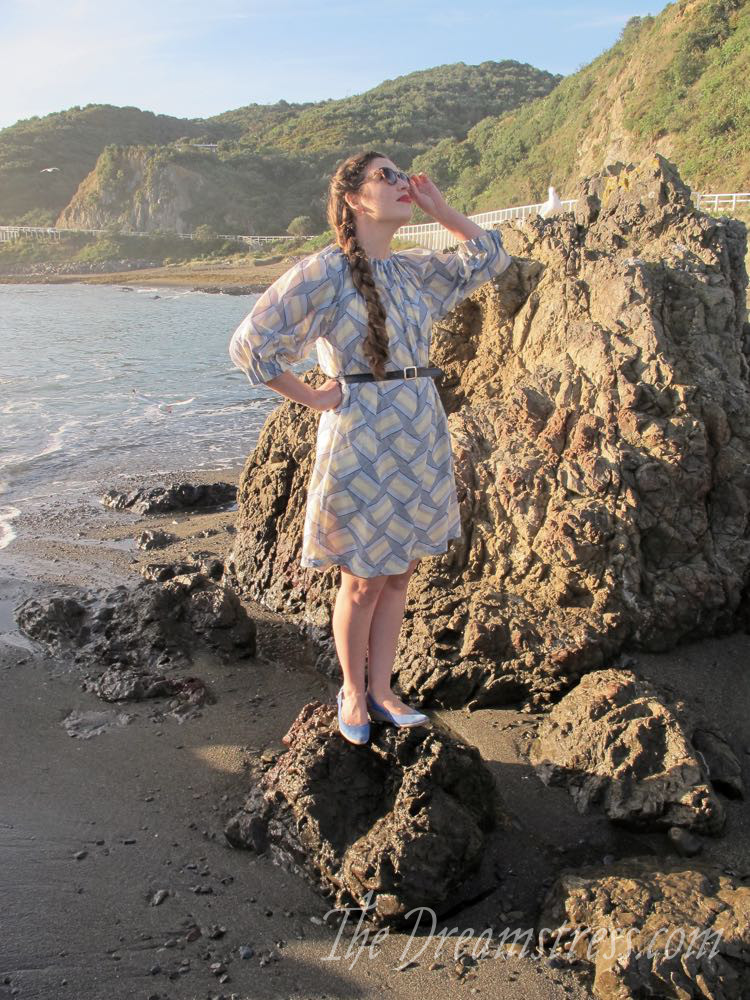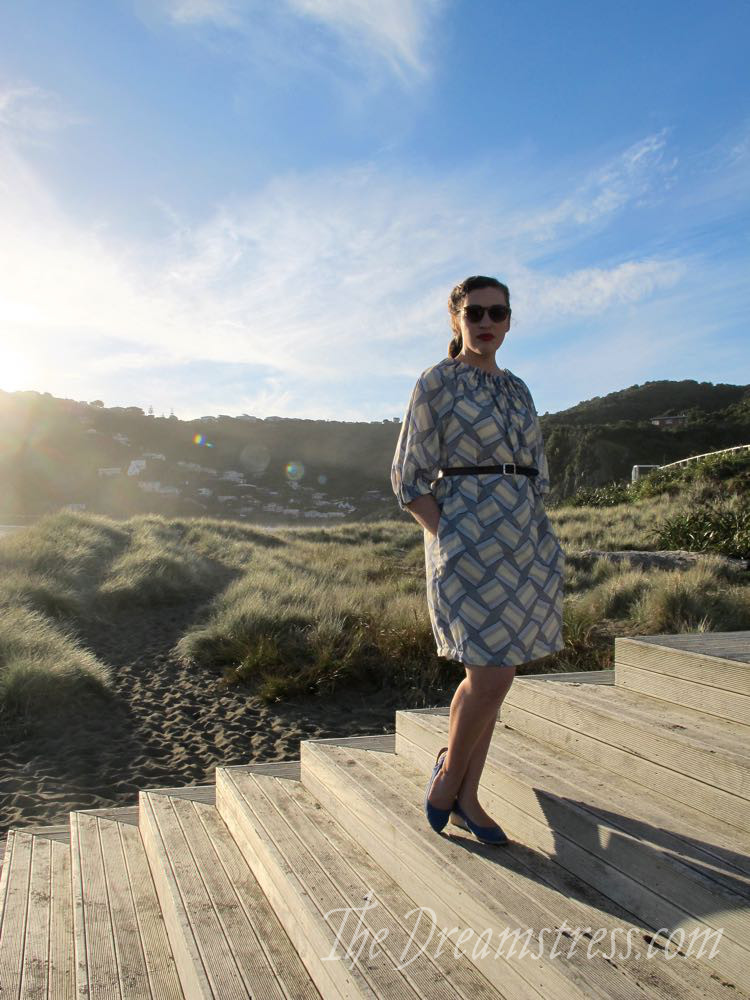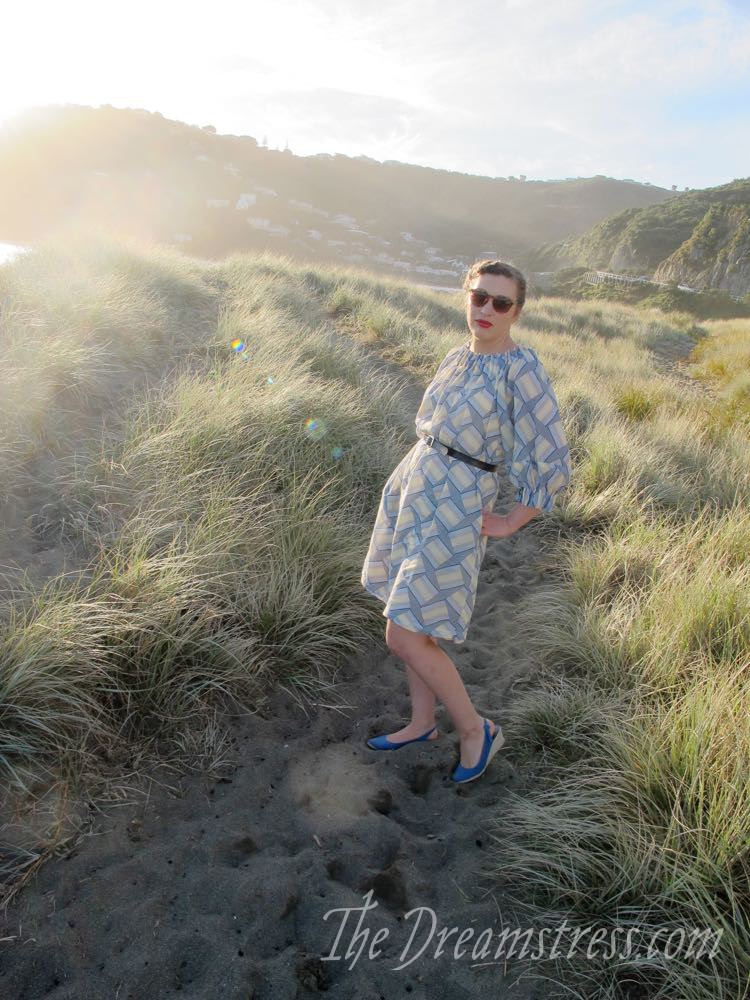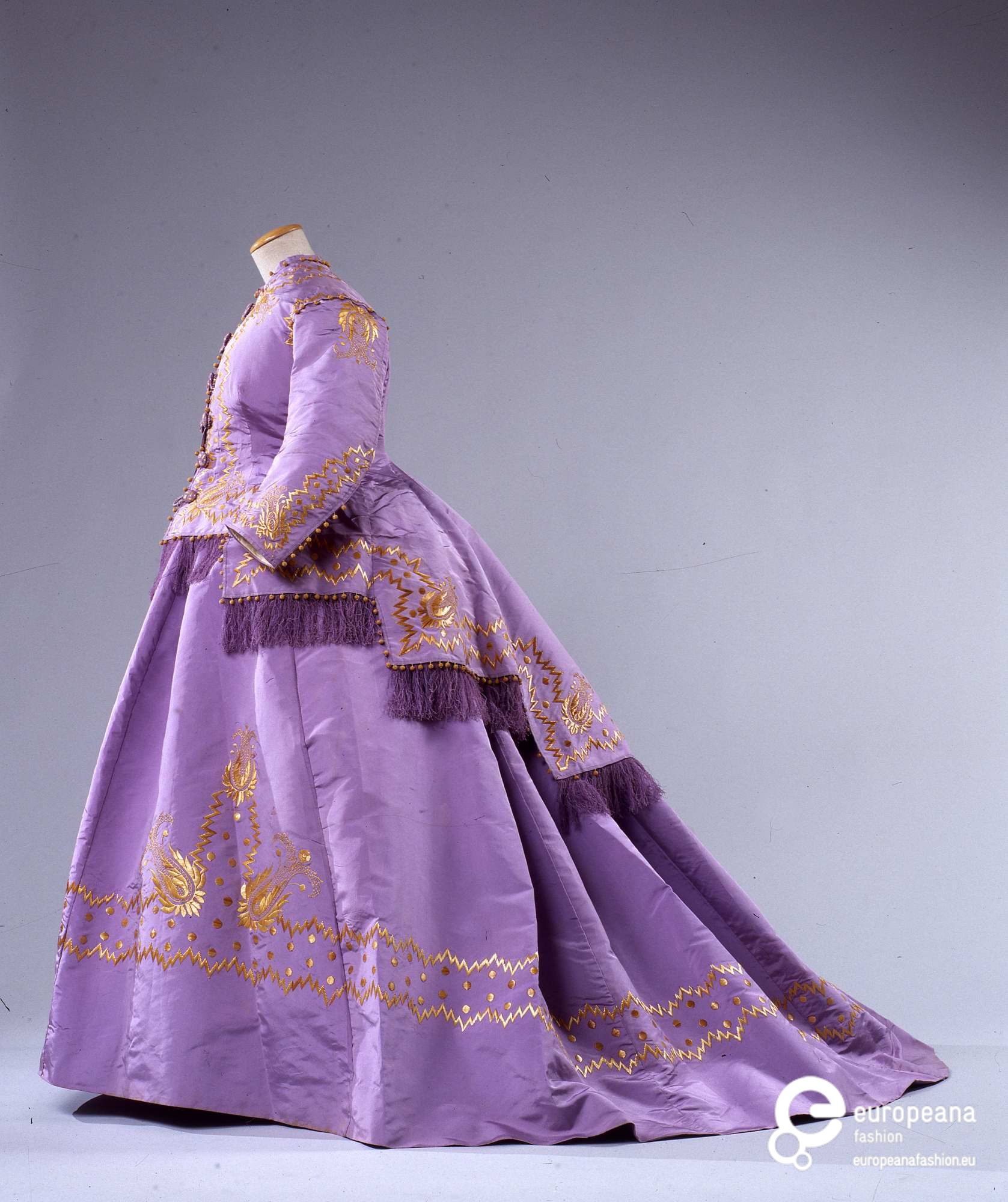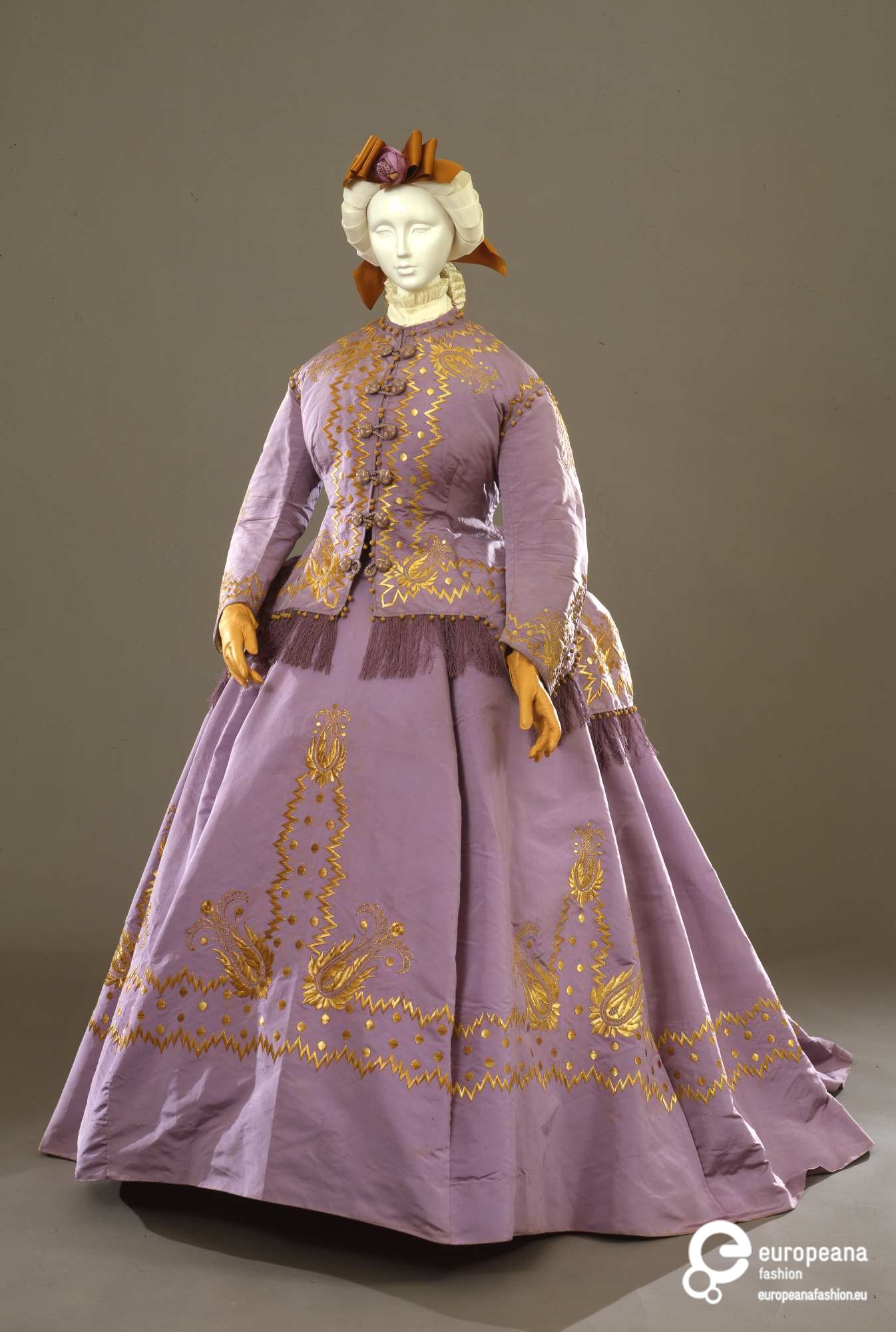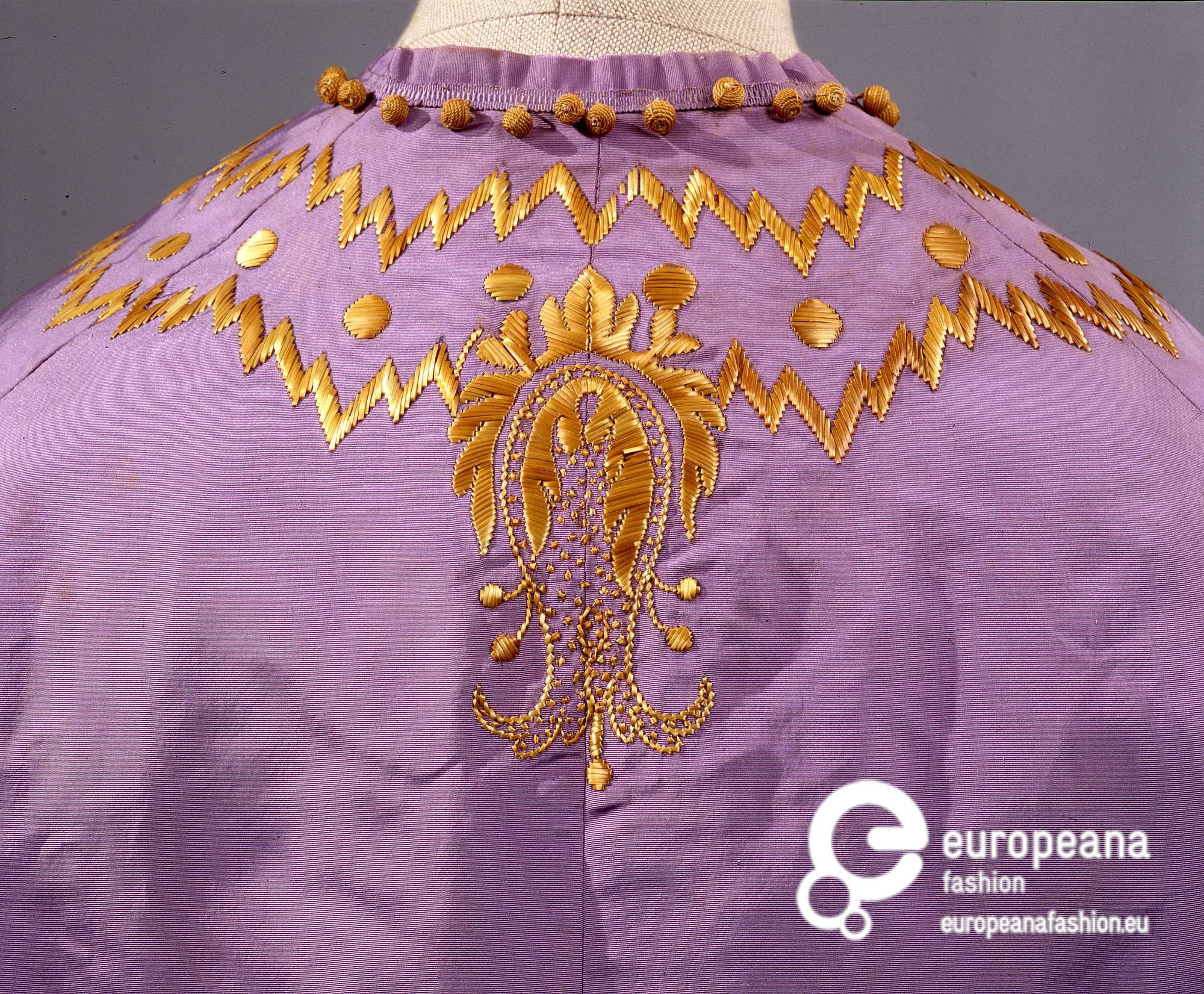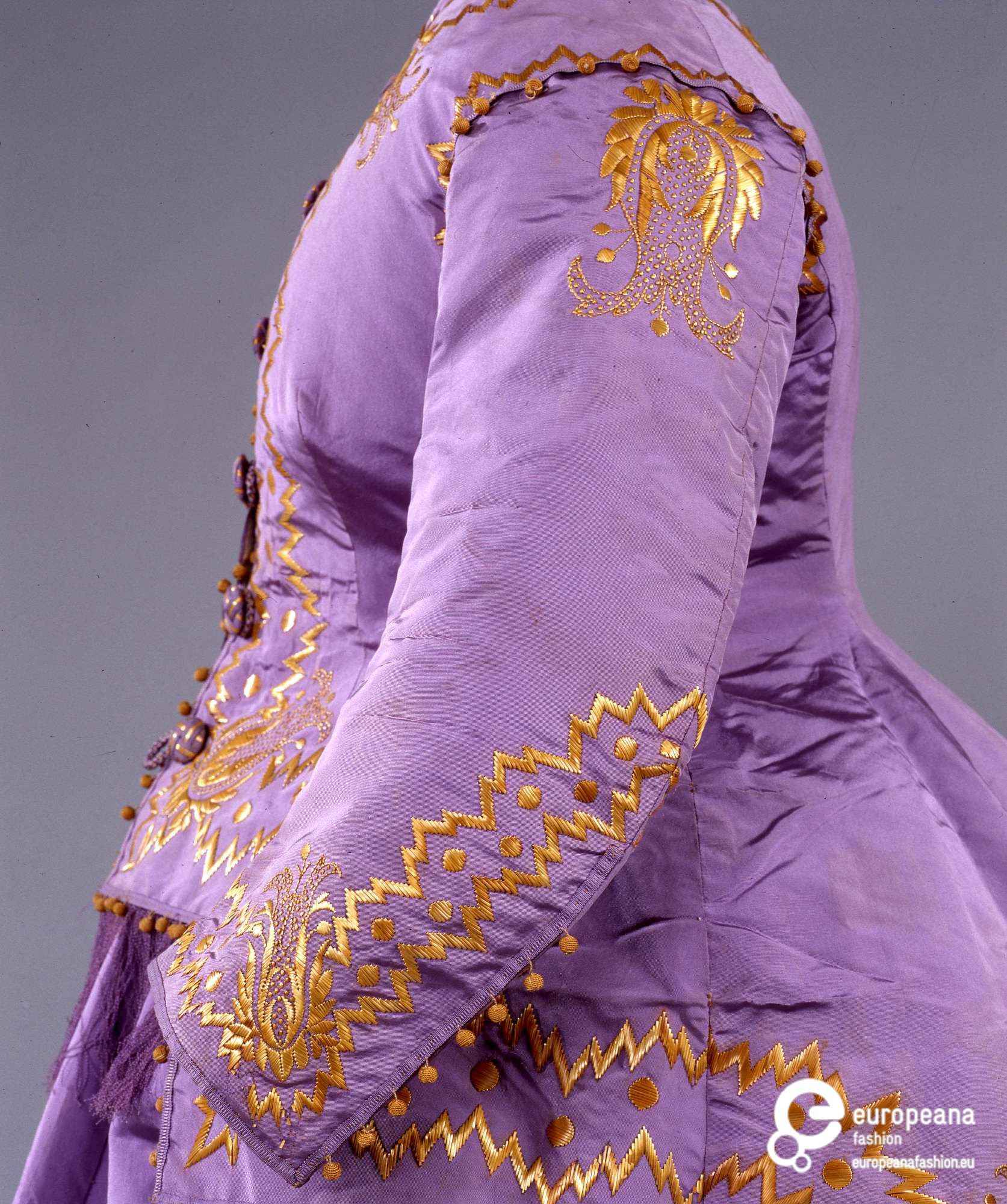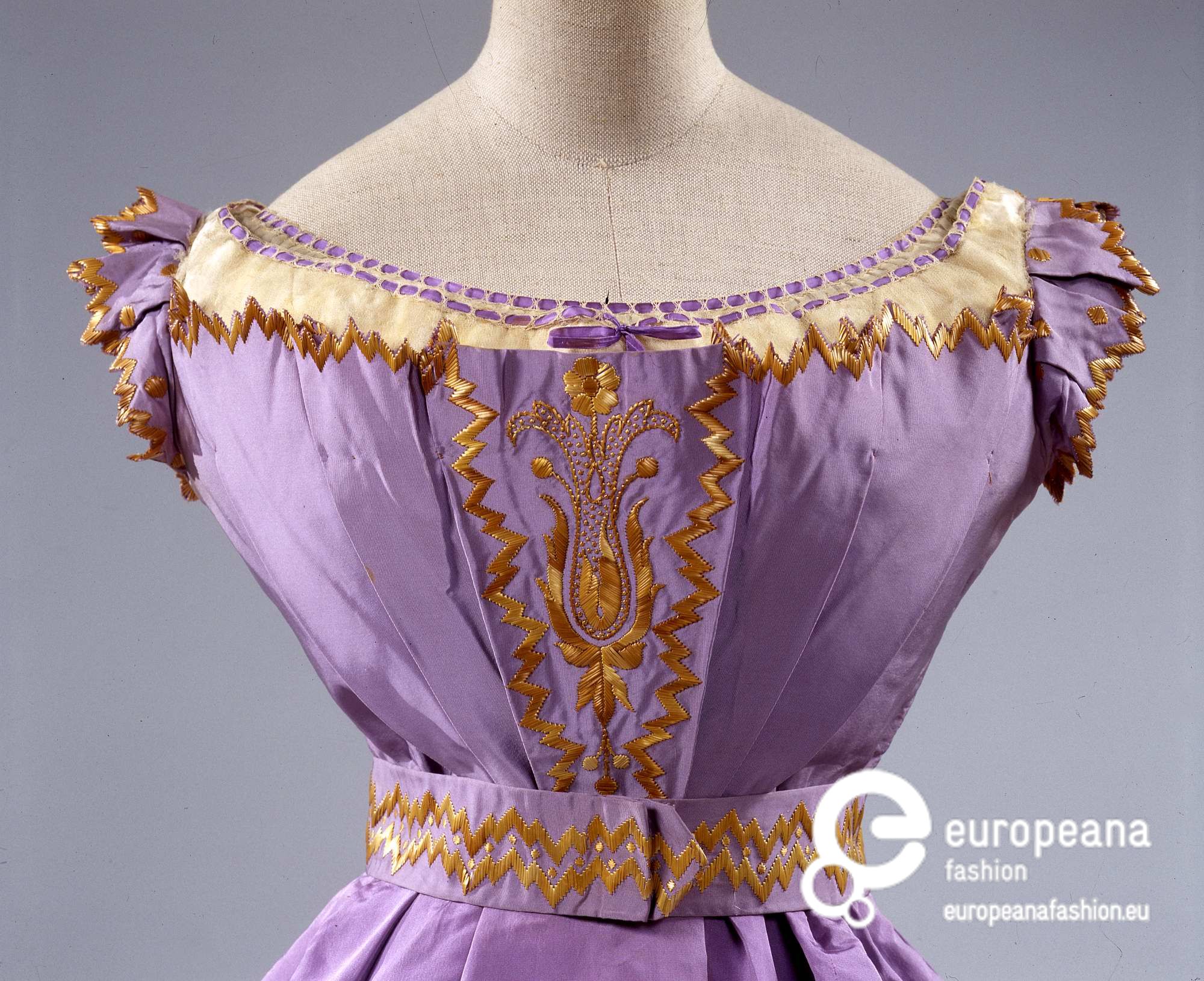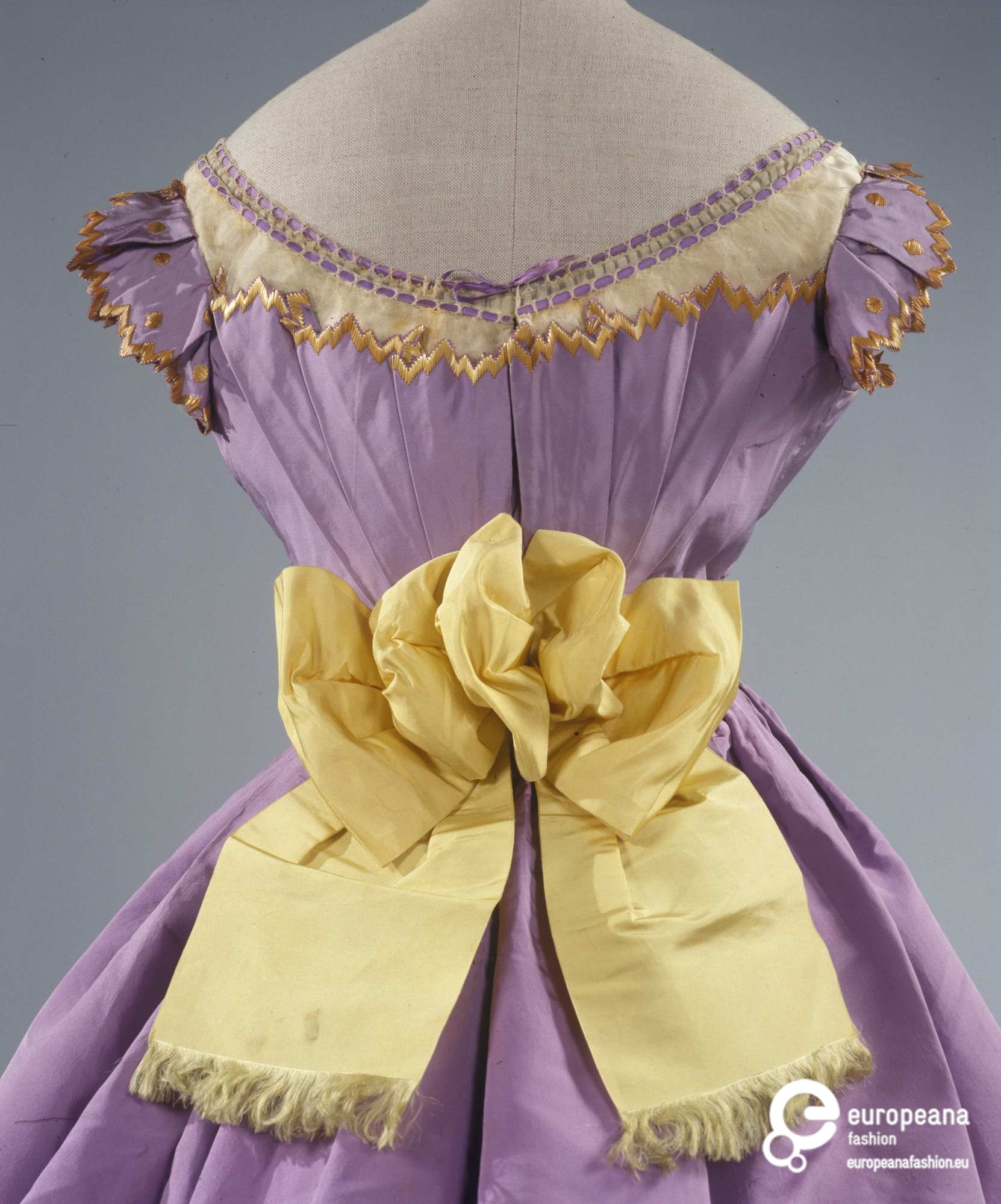I love bright red. Bright red lipstick, bright red clothes, bright red shoes*… Every time I see a pattern I like I think how good it would look in bright red. And whenever someone makes one of my Scroop patterns in bright red I am super envious.
So why don’t I make all my Scroop stuff in bright red?
Because bright red is a glorious colour for making me cheerful, but a terrible for showing construction details.
So, when I choose fabric for Scroop samples I have to prioritise things that photograph well over my personal taste, so no bright red. And by the time I’m done making toiles, fit test samples, and modelling samples for Scroop, I usually have more than enough samples of a pattern in my personal wardrobe (which I try very hard to keep within reason), and I want to sew something different!
Happily, and eventually, things do wear out, and I get to make new ones, and I get to make them in wonderful impractical colours, like black, and bright red (yay!).
So this autumn I finally get to add a Miramar in bright red wool crepe knit to my wardrobe. Oh happiness!
I finished it this morning, and paired it with a Scroop Fantail with added pockets (tutorial coming Wednesday!) in dark blue chambray, really awesome 1940s inspired two-tone brown suede shoes, and a vintage 1980s leather bomber jacket.
The jacket is my favourite non-me-made wardrobe item at the moment. It’s NZ-made, and I found it at an op-shop in Nelson over Christmas. When I brought it home Mr D saw it, grabbed it, and said ‘Mine!’.
I’ve had to wrest it out of his grasp a number of times since then, and remind him that he already has his dad’s 1980s suede bomber jacket! Still, the jacket is definitely ‘borrowing the boyfriend’s wardrobe’ material, which means you can pair it with anything from jeans to cocktail dresses.
For the photos I wanted to go into town and use some of the amazing graffiti murals around Wellington as backdrop, and Mr D wanted to go hang out in the woods, so we compromised and went to Trelissick Park, which is somewhere we go walking almost every week, but weirdly, I’ve never used for a photoshoot – we tend to get excited and go further afield, out to the beach or something.
Trelissick Park is mostly stream and woods, but it includes the remains of the Kaiwharawhara powder magazine. Not quite graffiti, but a little more gritty than usual woods.
A powder magazine is a building to store gunpowder, and smart ones are built far away from any other building, just in case…
Not only is the powder magazine one of the few remaining (well, for a given degree of ‘remaining’) examples of a historic powder magazine in New Zealand, it’s built to a plan devised by the 17th century French military engineer Sebastien Le Prestre de Vauban** (with the exciting addition of windows). There was an attempt to restore the magazine in the 2000, but the masterminds behind New Zealand’s biggest robbery noticed the newly-roofed building as they were planning their heist, and decided it would be a good place to set their getaway van on fire.
So, alas, all that remains of the magazine buildings are the stone and cement walls, and a few bits of floor. Still, it’s a great bit of history, and it makes a good photo location.
Mr D managed to capture the hilarious moment when I was posing and saw a kereru (NZ wood pigeon, the size of a small chicken) fly past, and I made an excited Oooh! face and accidentally did the best Taylor Swift impression ever. Check it out:
Normal posing me:
Accidental Taylor Swift me:
And in the two photos above you can just see the second most awesome thing*** about my new Fantail: the hem facing, which is ‘Atom Red’!â€
Yay red!
*sadly, bright red shoes look rubbish on me.
**a pause to appreciate the utter beauty of his name.
*** the first, of course, being pockets!
†‘Atom red’ is a slightly more ominous name now than when I inherited this bias tape from my grandmother, but I’m telling myself that atoms are still good, and generally extremely necessary. It’s only the part where you start fissioning or fusioning them that gets problematic…


